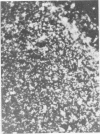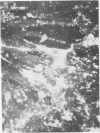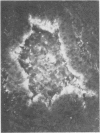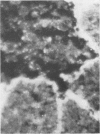Abstract
Immunofluorescent staining has been used to identify Mycoplasma hyopneumoniae in smears of broth cultures, in infected pig testicle cell cultures, and in frozen cut sections of pneumonic lungs from field and experimentally produced cases of enzootic pneumonia. In the pneumonic pig lung, fluorescent staining was limited to the surface of the bronchial and bronchiolar epithelium and to the contained exudate. In a series of trials using experimentally infected pigs fluorescence was not detected until 25 days post-infection and was regularly seen in pigs killed thereafter. Porcine immune globulin precipitated from the serum of experimentally infected pigs and conjugated with fluorescein isothiocyanate was reactive and specific for the detection of M. hyopneumoniae. Immune globulin conjugates prepared from the serum of hyperimmunized rabbits were reactive but in some cases produced a faint non-specific staining of frozen tissue sections. No such non-specific reactions were noted on stained culture smears or cell cultures.
Fluorescence was not seen in known positive preparations stained with non-immune pig globulin conjugates or in preparations from uninoculated cell cultures or pigs, stained with non-immune or immune globulin conjugates.
Mycoplasma hyorhinis was detected by immunofluorescent staining with homologous conjugates, in smears of broth cultures and in tissue sections from pigs with polyserositis.
Immunofluorescent staining was found to be species specific and useful for the early species identification of mycoplasma isolated from pigs.
Full text
PDF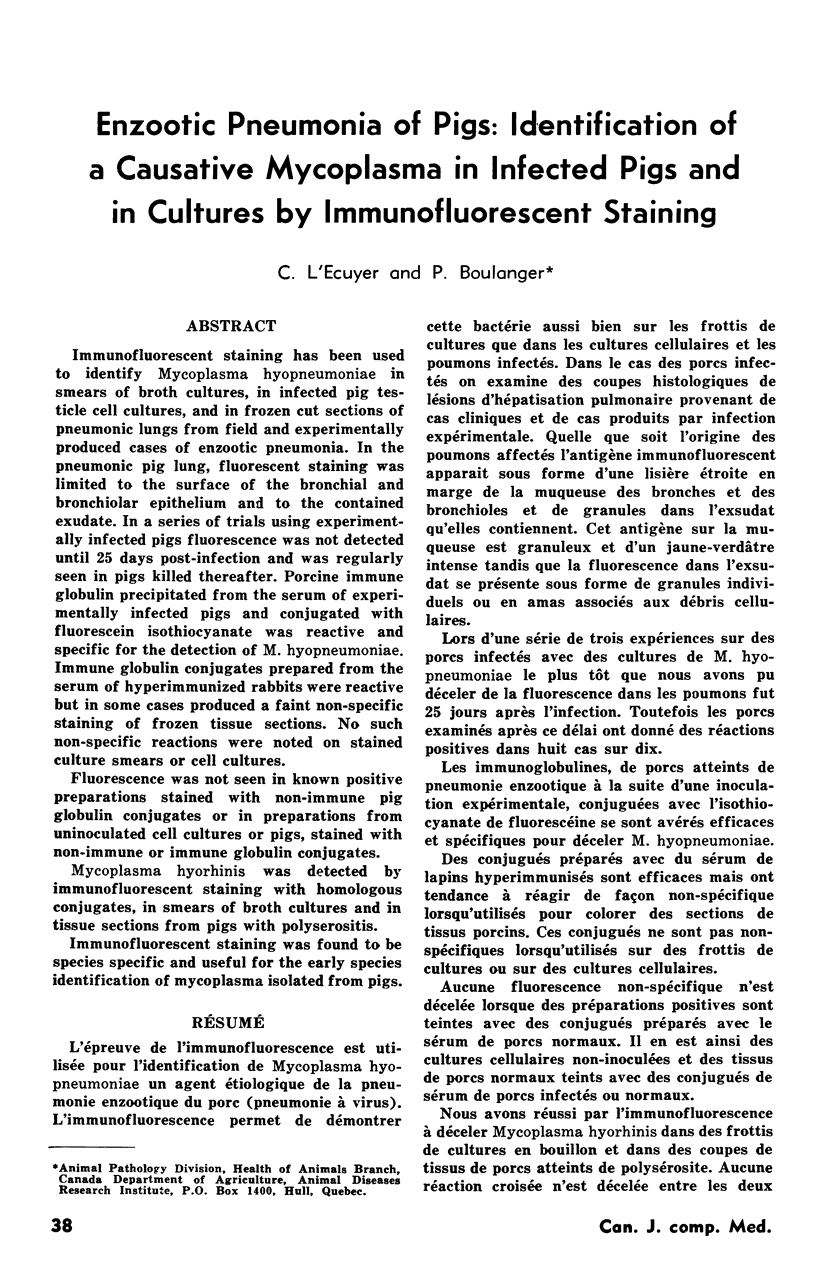
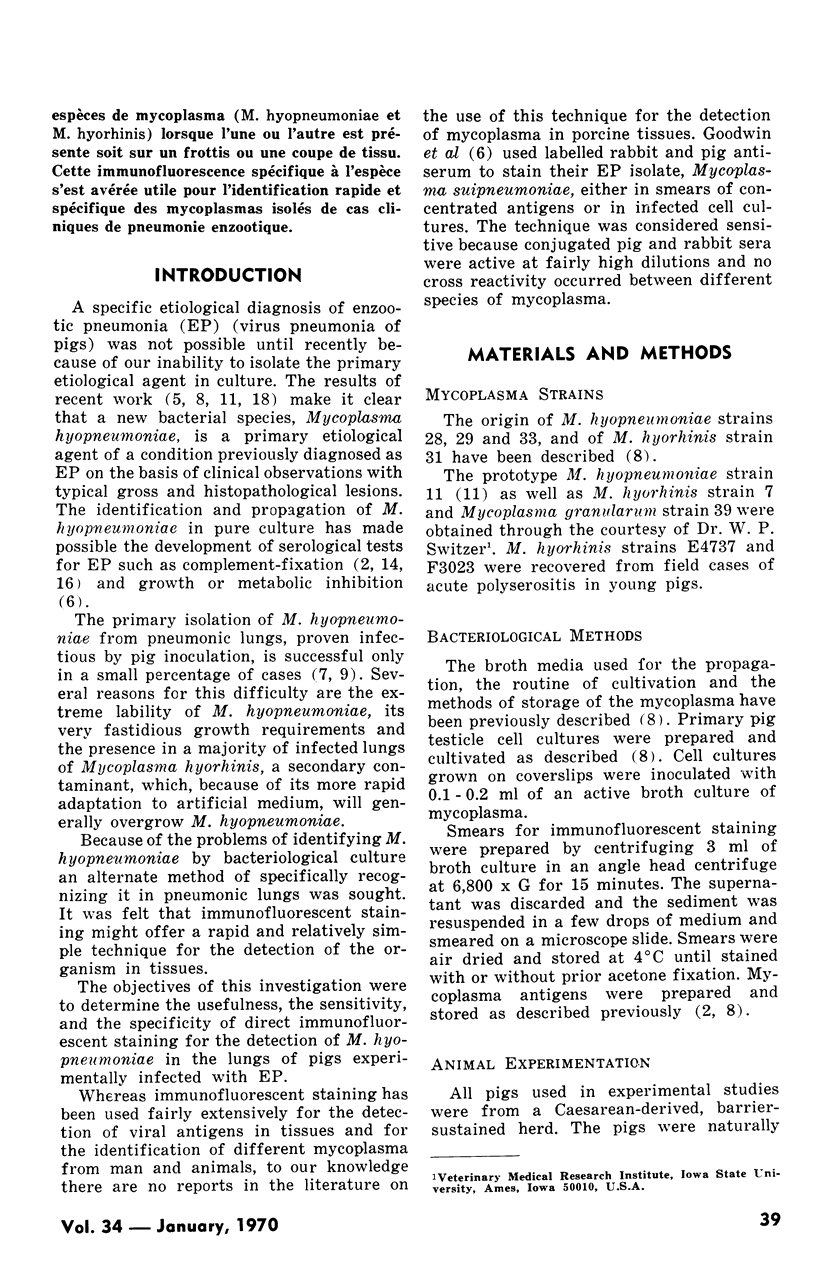
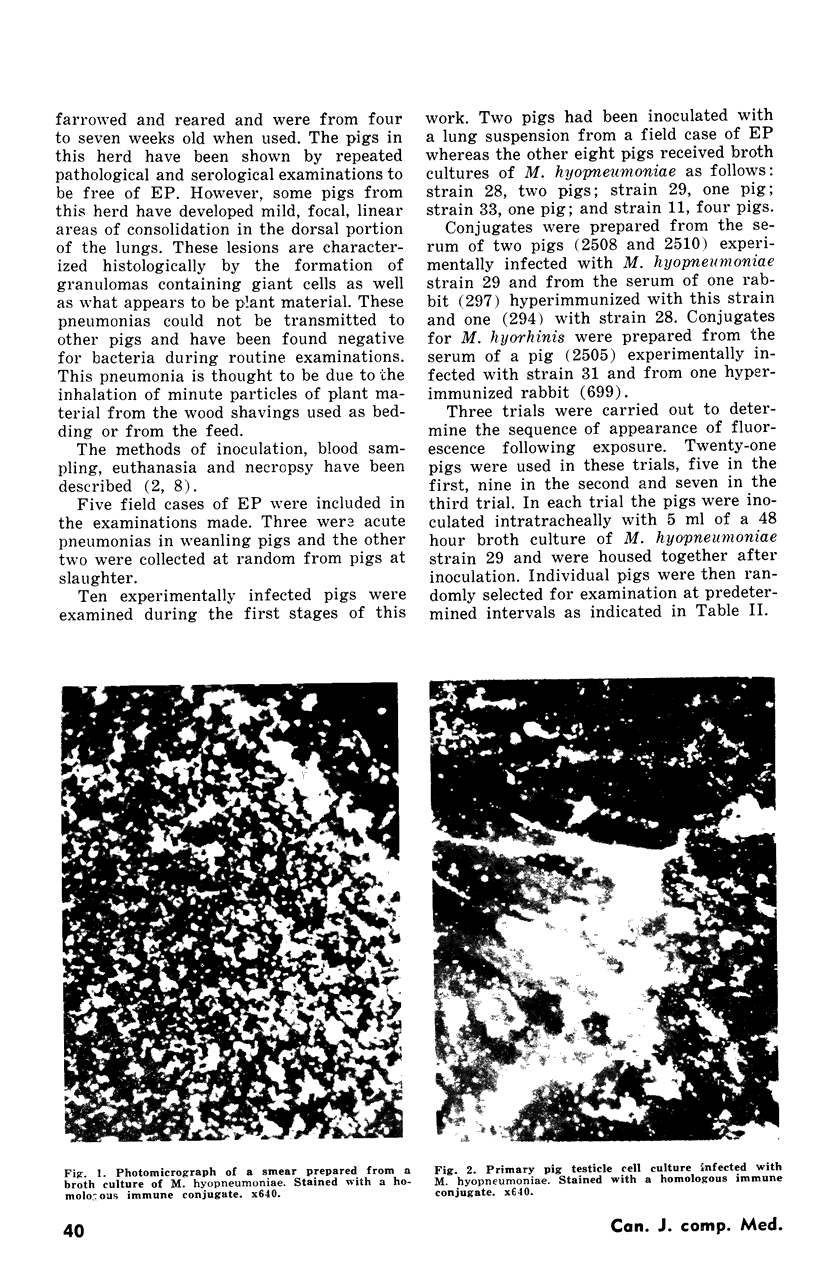
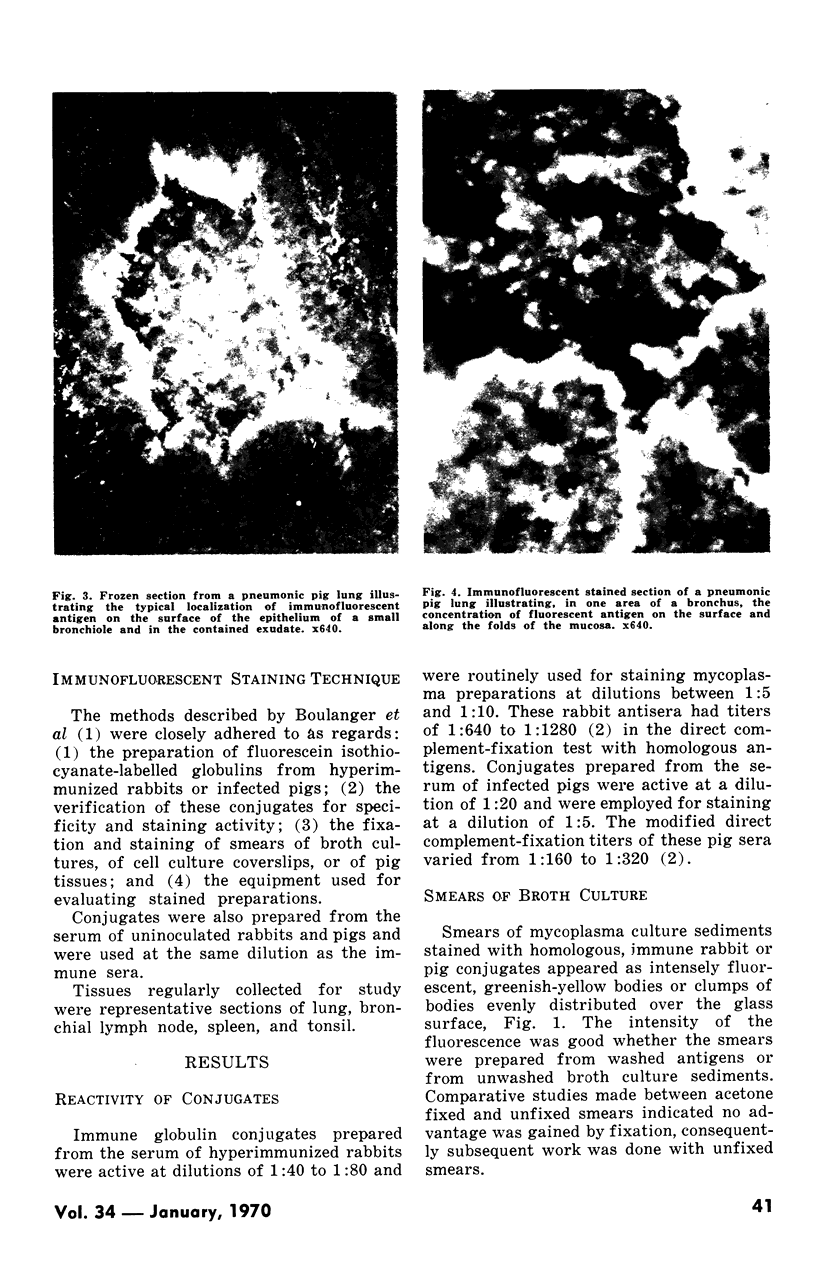
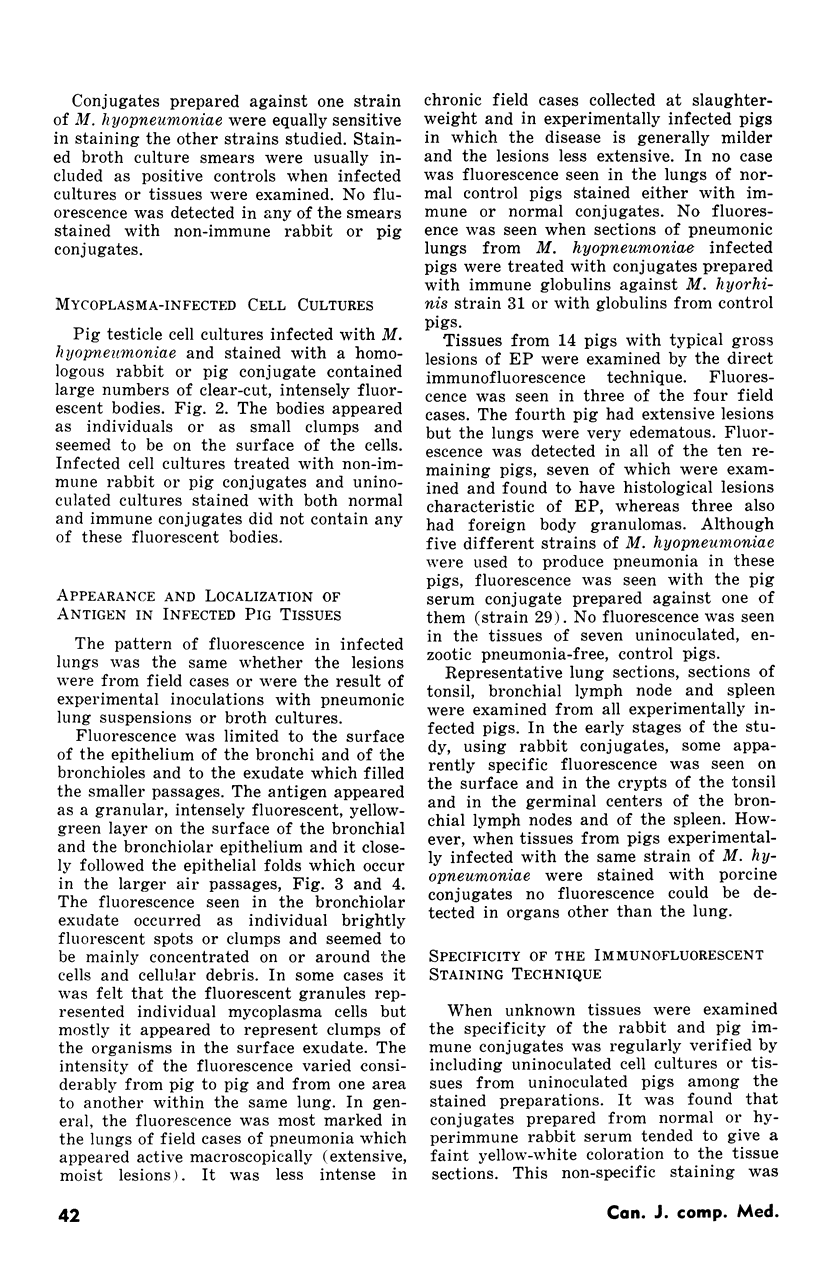
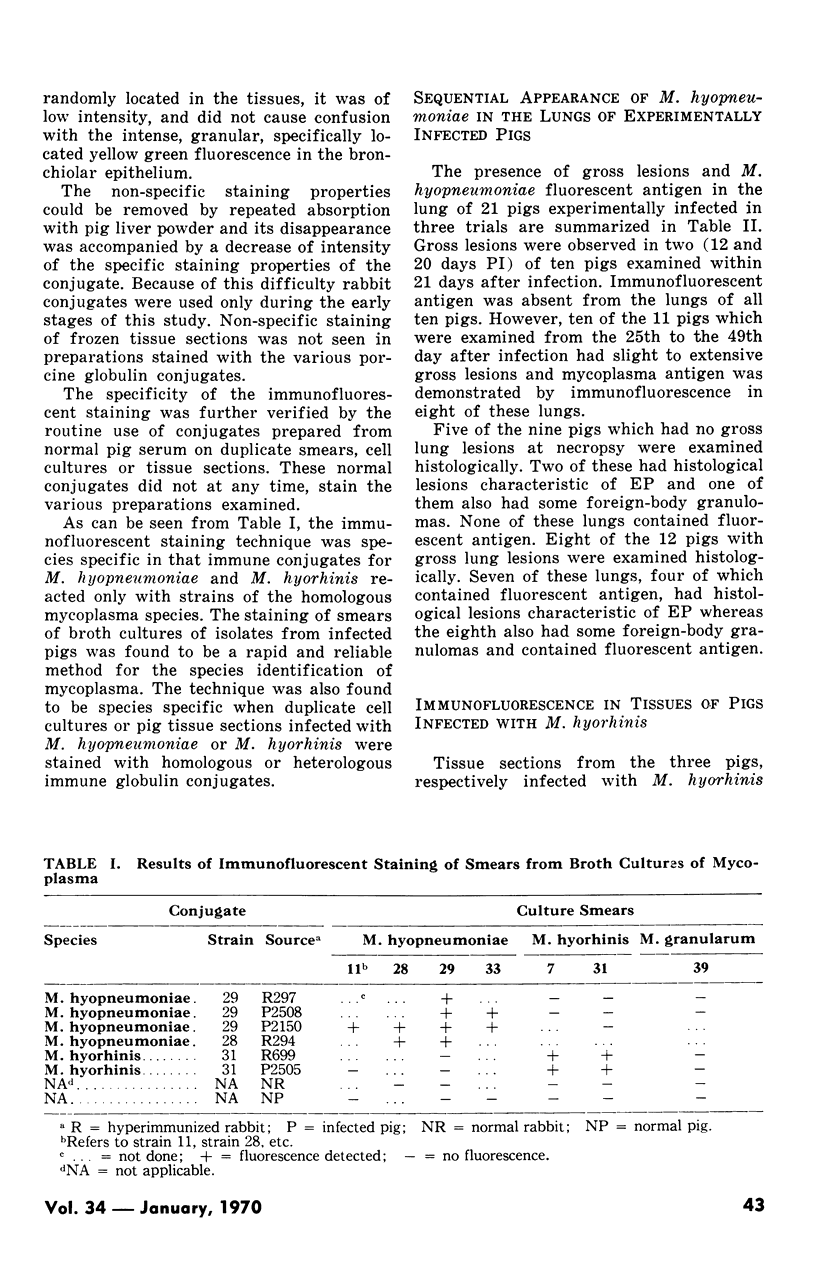
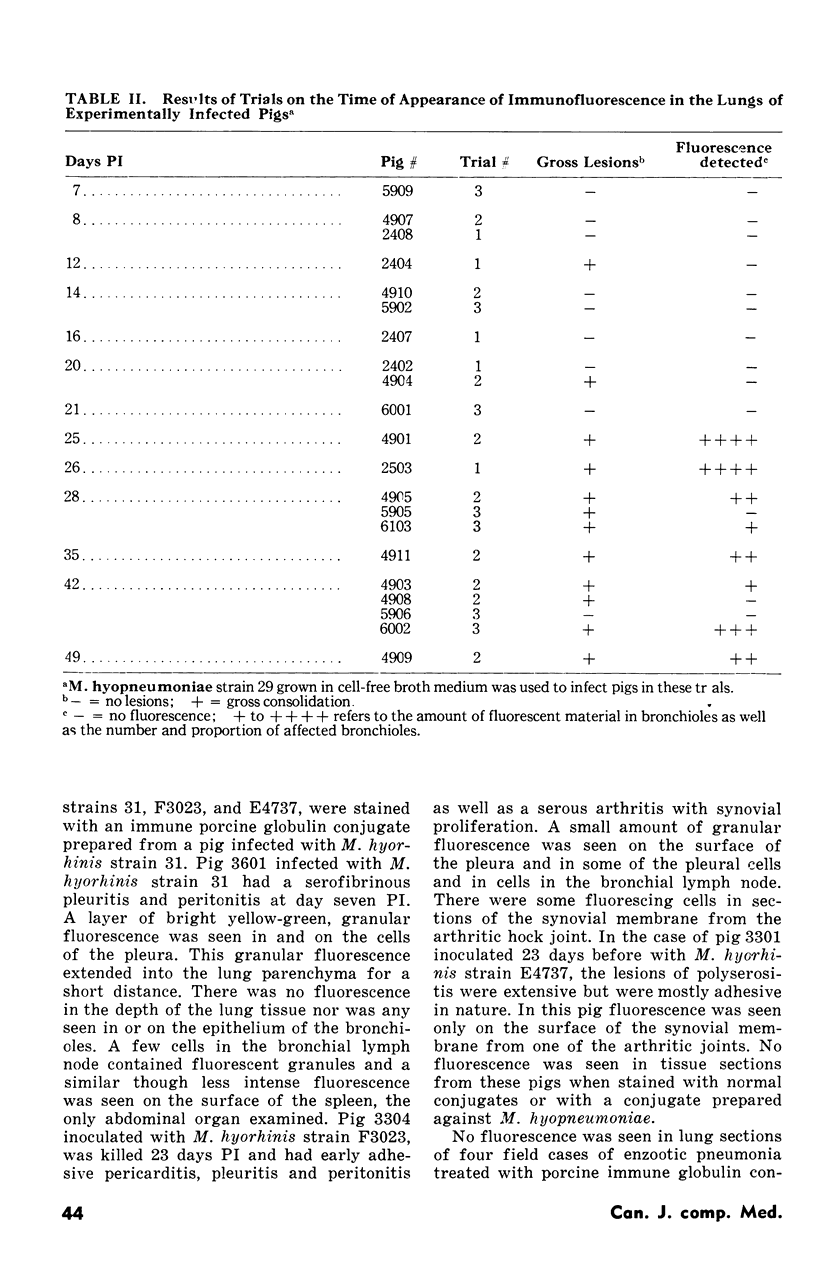
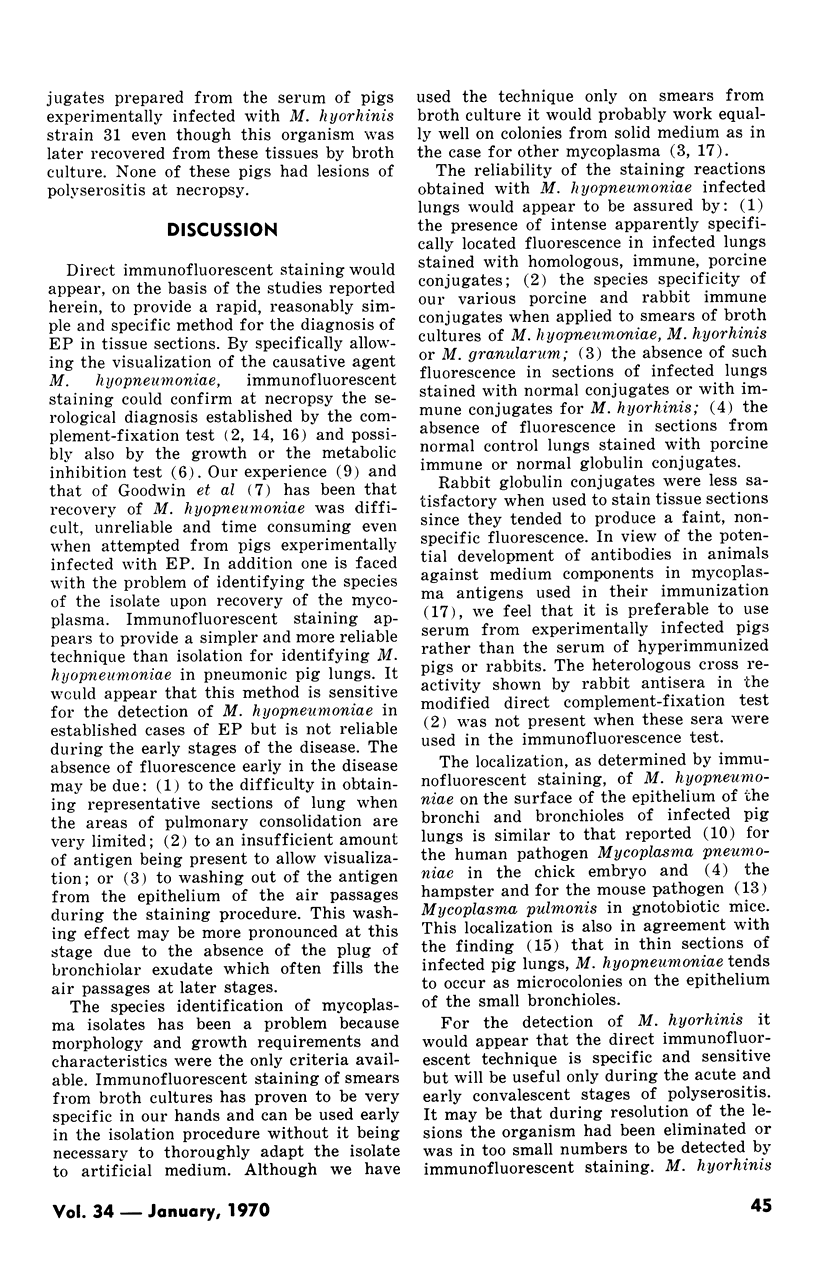
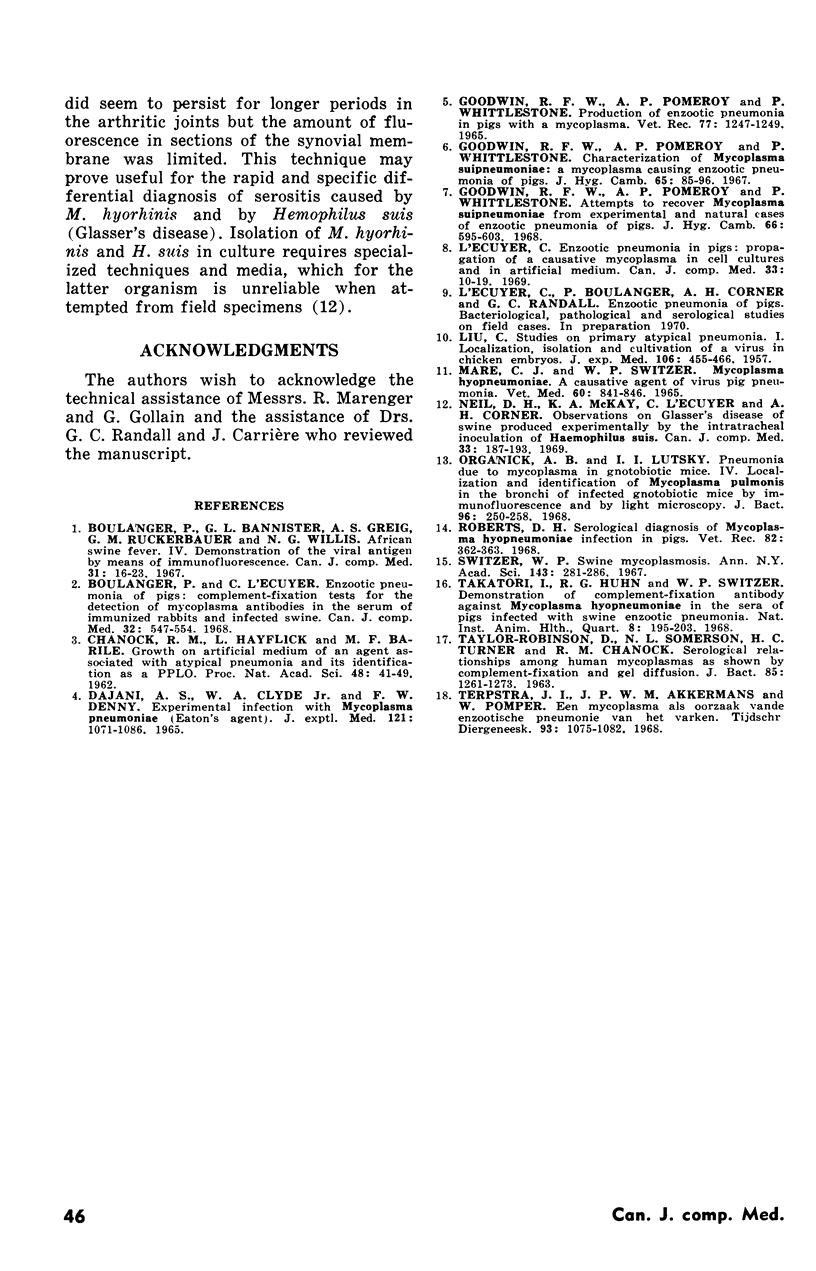
Images in this article
Selected References
These references are in PubMed. This may not be the complete list of references from this article.
- Boulanger P., Bannister G. L., Greig A. S., Gray D. P., Ruckerbauer G. M., Willis N. G. African swine fever. IV. Demonstration of the viral antigen by means of immunofluorescence. Can J Comp Med Vet Sci. 1967 Jan;31(1):16–23. [PMC free article] [PubMed] [Google Scholar]
- Boulanger P., L'Ecuyer C. Enzootic pneumonia of pigs: complement-fixation tests for the detection of mycoplasma antibodies in the serum of immunized rabbits and infected swine. Can J Comp Med. 1968 Oct;32(4):547–554. [PMC free article] [PubMed] [Google Scholar]
- CHANOCK R. M., HAYFLICK L., BARILE M. F. Growth on artificial medium of an agent associated with atypical pneumonia and its identification as a PPLO. Proc Natl Acad Sci U S A. 1962 Jan 15;48:41–49. doi: 10.1073/pnas.48.1.41. [DOI] [PMC free article] [PubMed] [Google Scholar]
- DAJANI A. S., CLYDE W. A., Jr, DENNY F. W. EXPERIMENTAL INFECTION WITH MYCOPLASMA PNEUMONIAE (EATON'S AGENT). J Exp Med. 1965 Jun 1;121:1071–1086. doi: 10.1084/jem.121.6.1071. [DOI] [PMC free article] [PubMed] [Google Scholar]
- Goodwin R. F., Pomeroy A. P., Whittlestone P. Attempts to recover Mycoplasma suipneumoniae from experimental and natural cases of enzootic pneumonia in pigs. J Hyg (Lond) 1968 Dec;66(4):595–603. doi: 10.1017/s0022172400028333. [DOI] [PMC free article] [PubMed] [Google Scholar]
- Goodwin R. F., Pomeroy A. P., Whittlestone P. Characterization of Mycoplasma suipneumonia: a mycoplasma causing enzootic pneumonia of pigs. J Hyg (Lond) 1967 Mar;65(1):85–96. doi: 10.1017/s0022172400045563. [DOI] [PMC free article] [PubMed] [Google Scholar]
- L'Ecuyer C. Enzootic pneumonia in pigs: propagation of a causative mycoplasma in cell cultures and in artificial medium. Can J Comp Med. 1969 Jan;33(1):10–19. [PMC free article] [PubMed] [Google Scholar]
- LIU C. Studies on primary atypical pneumonia. I. Localization, isolation, and cultivation of a virus in chick embryos. J Exp Med. 1957 Oct 1;106(4):455–466. doi: 10.1084/jem.106.4.455. [DOI] [PMC free article] [PubMed] [Google Scholar]
- MARE C. J., SWITZER W. P. NEW SPECIES: MYCOPLASMA HYOPNEUMONIAE; A CAUSATIVE AGENT OF VIRUS PIG PNEUMONIA. Vet Med Small Anim Clin. 1965 Aug;60:841–846. [PubMed] [Google Scholar]
- Neil D. H., McKay K. A., L'Ecuyer C., Corner A. H. Glasser's disease of swine produced by the intracheal inoculation of haemophilus suis. Can J Comp Med. 1969 Jul;33(3):187–193. [PMC free article] [PubMed] [Google Scholar]
- Organick A. B., Lutsky I. I. Pneumonia due to Mycoplasma in gnotobiotic mice. IV. Localization and identification of Mycoplasma pulmonis in the bronchi of infected gnotobiotic mice by immunofluorescence and by light microscopy. J Bacteriol. 1968 Jul;96(1):250–258. doi: 10.1128/jb.96.1.250-258.1968. [DOI] [PMC free article] [PubMed] [Google Scholar]
- Switzer W. P. Swine mycoplasmosis. Ann N Y Acad Sci. 1967 Jul 28;143(1):281–286. doi: 10.1111/j.1749-6632.1967.tb27667.x. [DOI] [PubMed] [Google Scholar]
- TAYLOR-ROBINSON D., SOMERSON N. L., TURNER H. C., CHANOCK R. M. SEROLOGICAL RELATIONSHIPS AMONG HUMAN MYCOPLASMAS AS SHOWN BY COMPLEMENT-FIXATION AND GEL DIFFUSION. J Bacteriol. 1963 Jun;85:1261–1273. doi: 10.1128/jb.85.6.1261-1273.1963. [DOI] [PMC free article] [PubMed] [Google Scholar]
- Takatori I., Huhn R. G., Switzer W. P. Demonstration of complement-fixation antibody against Mycoplasma hyopneumoniae in the sera of pigs infected with swine enzootic pneumonia. Natl Inst Anim Health Q (Tokyo) 1968 Winter;8(4):195–203. [PubMed] [Google Scholar]



